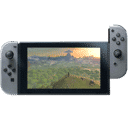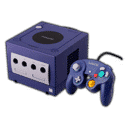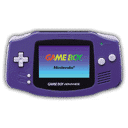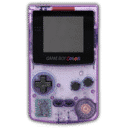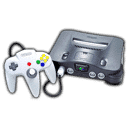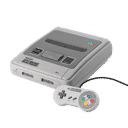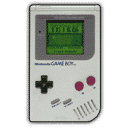
Summary:
Panic Button quietly stepped into a spotlight that many players did not see coming, helping Nintendo refresh some of the most recognisable Nintendo Switch games for Nintendo Switch 2. Instead of flashy paid remasters, New Super Mario Bros U Deluxe, Super Mario Odyssey, Super Mario 3D World + Bowser’s Fury and ARMS all received free upgrades that focus on sharper visuals, higher frame rates and new touches like HDR and GameShare support. The goal was simple but powerful: let these hits feel right at home on the newer system while still looking and playing like the favourites players remember. We look at why Nintendo trusted Panic Button with this work, what has changed in practice when you boot these games on Nintendo Switch 2, and how it feels when Mario, Bowser and the ARMS cast finally stretch their legs on more capable hardware. By the end, you will know what is happening under the hood, why the upgrades matter and whether it is worth diving back into these adventures on Nintendo Switch 2.
Panic Button’s surprising role in Nintendo Switch 2 upgrades
Panic Button is best known among many players as the studio that pulled off what looked impossible for the original Nintendo Switch, bringing demanding games like Doom, Wolfenstein and Warframe to portable hardware without completely breaking the experience. So when the team revealed that Nintendo had asked for help with Nintendo Switch 2 upgrades, it felt like a natural but still exciting surprise. This time the job was not about squeezing huge third party blockbusters onto older hardware, but about refreshing Nintendo’s own favourites for a system with more power and a sharper focus on modern displays. Panic Button explained that Nintendo approached them to help update marquee titles from the Nintendo Switch library and, crucially, to demonstrate what Nintendo Switch 2 can do while staying true to how these games originally felt. That short description says a lot about trust, technical skill and the way Nintendo likes to roll out improvements in quiet but important steps.
Why Nintendo picked Panic Button for marquee Switch 2 updates
On paper, Nintendo could have handled these updates internally. Mario and ARMS are first party brands, and Nintendo’s own teams know these worlds inside out. Yet choosing Panic Button makes sense when you think about the studio’s track record and the delicate balance required here. The upgrades had to show off new capabilities such as improved resolution, steadier performance and HDR support on compatible displays, but they also could not disturb the tone, timing and readability that fans know by heart. Panic Button has years of experience tuning games to a hardware target, whether that target is pushing everything down to fit or subtly raising the ceiling. Nintendo also gains flexibility by working with a partner that can focus purely on technical delivery while internal teams move forward on new projects. In the end, picking Panic Button feels like asking a trusted mechanic to tune your favourite car so it runs better on new roads, without changing how the steering feels in your hands.
The upgraded Mario and ARMS games on Nintendo Switch 2
Four games sit at the heart of this collaboration: New Super Mario Bros U Deluxe, Super Mario Odyssey, Super Mario 3D World + Bowser’s Fury and ARMS. All of them received free upgrades that unlock extra potential when they load on Nintendo Switch 2 compared to the original system. For side scrolling fans, New Super Mario Bros U Deluxe benefits from cleaner visuals that make busy stages easier on the eyes, especially on large 4K televisions. Super Mario Odyssey’s colourful kingdoms gain more headroom for sharpness and motion, helping every hat throw and long jump feel just that little bit crisper. Super Mario 3D World + Bowser’s Fury not only cleans up the image but also boosts performance in both the classic 3D stages and Bowser’s Fury’s open spaces. ARMS, Nintendo’s stretchy fighting game, takes advantage of the improvements to keep the action fluid as fists, ribbons and boomerang gloves cross the screen. Together, these upgrades form a small but meaningful tour of what Nintendo Switch 2 can do for existing favourites.
Resolution boosts and HDR visuals on Nintendo Switch 2
One of the most immediate changes players notice is how sharp these games look on a Nintendo Switch 2, especially in TV mode. The system targets higher resolutions for supported titles, and Panic Button’s work helps these four games take advantage of that without introducing visual noise. On a good television, edges on Mario, enemies and level geometry look cleaner, text is easier to read from a couch and small details in environments pop in ways that can make these adventures feel newly alive. In titles that support HDR, such as Super Mario Odyssey and Bowser’s Fury, the difference can be even more striking. Bright elements like Power Moons, fire effects and sunlit skies can show a wider range of brightness, while shadows retain more subtle detail instead of collapsing into muddy blobs. It is not about turning everything into a different style, but about letting the original art breathe on modern screens and helping your eyes relax during long sessions.
Frame rate upgrades and how smoother play feels in action
Resolution is only half of the story. The other key pillar of the Nintendo Switch 2 upgrades is performance, and this is where players often feel the change in their hands even before they can describe it. Higher or more stable frame rates make movement and camera control more predictable, which matters a lot for platformers and action games. In Super Mario 3D World, tighter frame pacing helps you judge jumps, dodge obstacles and land attacks with more confidence, especially in chaotic multiplayer stages. Bowser’s Fury benefits when the camera sweeps around larger spaces and during moments when Fury Bowser erupts onto the scene. Super Mario Odyssey already ran well, but smoothing out small dips makes complex sequences of jumps feel silkier. ARMS gains from steadier motion when both fighters are flinging long range punches and dashing around the arena. The upgrades do not turn these games into something radically different, yet they quietly reduce friction in a way that players quickly appreciate once they go back to the older hardware for comparison.
Staying faithful to the original Nintendo Switch gameplay feel
Whenever older favourites receive upgrades, there is a risk that changes to timing or input response will accidentally alter how they play. Nintendo and Panic Button clearly wanted to avoid that trap. Their stated goal was to showcase new capabilities of Nintendo Switch 2 while staying faithful to the original games, and you can feel that philosophy in practice. Physics, enemy behaviour and level layouts remain exactly as players remember, so long time fans do not have to relearn tricky sections or boss fights. Button mapping and motion control options also stay consistent, which is especially important for ARMS and some of Mario’s more acrobatic moves. Instead of tinkering with mechanics, the work focuses on presentation and performance, letting the classic design shine through with fewer technical distractions. It feels as if someone cleaned the glass on a display case and adjusted the lighting, making a familiar treasure easier to admire without moving it to a different shelf.
What these free upgrades mean for Mario and ARMS fans
For players, the most obvious benefit is value. These are free upgrades for existing owners, not separate purchases or paid deluxe editions. If you already own the games digitally or on cartridge, installing the updates lets them scale up gracefully when you move from the original system to Nintendo Switch 2. That makes the newer hardware feel more welcoming on day one, because your old favourites do not just run, they run better. It also encourages people who skipped some of these titles to give them another look, knowing that the improved experience is now part of the package. For Mario fans specifically, it is hard not to smile at the idea that side scrolling, 3D and experimental takes on the series all benefit from the newer machine. ARMS, meanwhile, gets a second wind at a time when smoother play and better image quality can make competitive matches more readable, both for players and for anyone watching on the couch.
How these upgrades show off Nintendo Switch 2 features
These updates are also a quiet showcase for what Nintendo Switch 2 is trying to achieve as a platform. The system is not just about bigger numbers on paper, it is about using that extra headroom to improve everyday play. Visual tweaks demonstrate how the console handles higher resolutions and HDR output on modern televisions, while performance boosts hint at how games can aim for steadier frame rates without sacrificing Nintendo’s signature style. Features like GameShare and GameChat, where supported, highlight a push toward more flexible multiplayer that fits both living room and online play. For someone unboxing a Nintendo Switch 2, loading up a familiar Mario game or ARMS and immediately seeing and feeling improvements sends a clear message. The console respects your library, but it also wants to lift it to a new level so that old purchases do not feel like they are stuck in the past.
Practical tips for enjoying the upgraded games on Switch 2
Getting the most from these upgrades does not require any complicated setup, but a few simple steps can make a nice difference. First, make sure your Nintendo Switch 2 is fully updated, then confirm that each game has the latest patch installed before you start playing. If you are using a modern television, dig into the settings to check that the correct HDMI input is set to support higher bandwidth modes and, if available, HDR. Calibrating brightness and colour might sound boring, yet it can help Mario’s worlds and ARMS arenas look far closer to what the artists intended. When playing portably, remember that improved resolution still offers benefits on the handheld screen, with sharper interfaces and cleaner edges. Finally, if the upgraded titles support GameShare or local multiplayer, consider revisiting them with friends or family. Seeing how smooth four player chaos looks in Super Mario 3D World on Nintendo Switch 2 can be a great way to show off the system.
What this partnership suggests about Nintendo’s Switch 2 strategy
Nintendo’s decision to lean on Panic Button for these upgrades hints at a larger strategy for Nintendo Switch 2. Instead of treating the new console as a hard reset, Nintendo is building a bridge that respects existing purchases and encourages continuity. Free technical upgrades for high profile games send a friendly signal that the company values long term support and wants launch era favourites to age gracefully. Partnering with a specialist studio also frees internal teams to focus on brand new projects while still delivering meaningful improvements to the back catalogue. From a broader perspective, this approach positions Nintendo Switch 2 as a machine that mixes forward momentum with respect for the past, not unlike how the hybrid design originally blurred the line between handheld and home console. Panic Button’s involvement shows that Nintendo is willing to tap trusted external talent when it can help deliver that balance more quickly and reliably.
What could be next for Panic Button and Nintendo collaborations
It is natural to wonder where this relationship might go from here. Panic Button has already proven its skill with both demanding ports and targeted upgrades, and Nintendo clearly feels comfortable giving the studio access to beloved brands. Officially, nothing beyond these specific updates has been confirmed, so it is wise not to treat future collaborations as guaranteed. Still, this project sets a precedent. If Nintendo continues to enhance more classics for Nintendo Switch 2, Panic Button is an obvious candidate to help, especially for titles where performance and image quality can see clear gains. There is also the possibility that the studio could assist with entirely new releases that benefit from its experience on the hardware. For now, the practical takeaway for players is simple. The partnership has already delivered tangible improvements to several big games at no extra cost, and it has opened the door for more creative ways to respect and refresh Nintendo’s library on Nintendo Switch 2.
Conclusion
Panic Button’s work on Nintendo Switch 2 upgrades is a great example of how careful technical improvements can breathe new life into familiar favourites without changing what made them special. By boosting resolution, stabilising performance and embracing features like HDR and GameShare where supported, the studio has helped New Super Mario Bros U Deluxe, Super Mario Odyssey, Super Mario 3D World + Bowser’s Fury and ARMS feel fresh again on newer hardware. At the same time, the upgrades stay firmly grounded in the original design and control feel, so long time fans can pick up a controller and play from muscle memory. For Nintendo, this partnership turns Nintendo Switch 2 into a more welcoming home for its existing library and sends a clear message about long term support. For players, it offers a perfect excuse to jump back into some of the best games from the previous system and see them shine in a new light.
FAQs
- Which games did Panic Button help upgrade for Nintendo Switch 2?
- Panic Button assisted Nintendo with upgrades for New Super Mario Bros U Deluxe, Super Mario Odyssey, Super Mario 3D World + Bowser’s Fury and ARMS. These titles now tap into Nintendo Switch 2’s extra power for sharper visuals, steadier performance and, in some cases, features like HDR and GameShare support, all while remaining free updates for existing owners.
- Do I need to pay again to use these upgraded versions on Nintendo Switch 2?
- No, these projects are framed as free upgrades rather than separate purchases. If you already own the supported games, either digitally or on cartridge, downloading the latest updates allows them to improve automatically when played on Nintendo Switch 2. You do not need to buy a special edition or a new licence just to enjoy the enhancements on the newer system.
- Will my existing save data carry over to the upgraded games on Nintendo Switch 2?
- In general, save data from the original system carries over when you migrate your profile to Nintendo Switch 2 using Nintendo’s transfer tools or cloud saves where supported. The upgrades focus on visuals and performance, not on changing progression systems, so you can usually pick up your adventure right where you left off. It is still a good idea to back up important saves before moving hardware, just for peace of mind.
- Do I need a special TV to see the benefits of these upgrades?
- You can see improvements on almost any modern television, thanks to higher resolution targets and cleaner image quality, but some features do require specific hardware. To enjoy HDR output, you need a compatible TV and the correct settings enabled on both the display and Nintendo Switch 2. Even without HDR, players should notice sharper edges, clearer text and more stable motion compared to running the same games on the original system.
- Are more Panic Button powered upgrades likely for Nintendo Switch 2?
- At the moment, Nintendo has only confirmed the current wave of upgraded games, and there is no official list of future projects involving Panic Button. That said, the studio’s strong track record and Nintendo’s willingness to highlight its role suggest that further collaboration would not be surprising. Until anything is announced, though, it is best to treat additional upgrades as a hopeful possibility rather than something guaranteed.
Sources
- Switch Port Specialist Panic Button Reveals It Helped Upgrade Multiple First-Party Games For Switch 2, Nintendo Life, November 20, 2025
- New Super Mario Bros. U Deluxe – Free Update for Nintendo Switch 2, Panic Button, June 2025
- Nintendo Switch 2 – Free game updates, Nintendo UK, June 5, 2025
- Panic Button announces they were behind many of the Switch 2 updates to Nintendo Switch games, GoNintendo, November 20, 2025
- Nintendo’s free Switch 2 upgrades for key Switch 1 titles are remasters in all but name, Digital Foundry, June 28, 2025
- Panic Button reveals it helped out on Nintendo Switch 2 game upgrades, My Nintendo News, November 20, 2025


